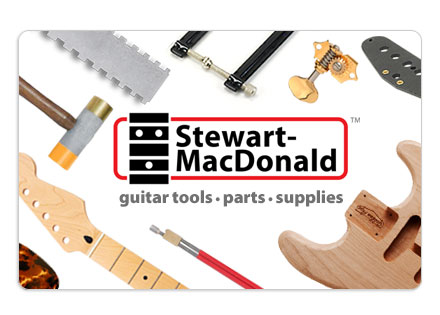I am revisiting this thread because I was researching more cosmetic damage repair videos on Youtube and remembered synapsistheory documented the fixes he performed on the KV2 seen in this thread. Synapsis, did you ever finish the ding repair(s)? How did it/they turn out? Did you get a practice guitar to try out the procedure first?
To revisit the trem cleaning work you did in this thread, I remember you inadvertently stripped some of the black finish on the trem of your $80 blue RR1 by leaving the parts soaking in vinegar a bit too long, which you've obviously refined to a shorter soak time as seen with the trem of your KV2. On a related note about cleaning and restoring metal hardware, during the most recent Christmas holiday I worked on two Ibanez trems and now I feel comfortable recommending 3-IN-ONE Multi-Purpose Oil applied with a toothbrush and wiped off with a rag. No soaking required, which meant I could start the brushing work immediately, though I imagine soaking might help for extremely rusted parts. The oil was also safe for all parts (as I noticed in a previous post you mentioned refraining from vinegar-soaking certain trem parts) and made them all look like they just came out of the factory, and no finish was stripped.
I understand this to be the procedure followed by most guys who swear by the time-tested method of "WD-40 + toothbrush" to clean metal parts, except I already had 3-IN-ONE available (and no WD-40). Many ways to skin a cat. Not trying to sway you from vinegar, and not trying to sway the WD-40 guys either, but just another option to consider.
In the video linked below, Dan Erlewine cleans off rust and dirt by soaking metal parts primarily in naphtha and a couple drops of 3-IN-ONE Oil, followed by brushing. I used this mixture and procedure on a different rusty/dirty Ibanez Edge trem in the past and got passable results (clean, but not all the rust was removed even after 24h soaking + brushing + wiping, which I couldn't understand why). The results I achieved using the 3-IN-ONE + immediate brushing were quicker and far more satisfying. Sorry Dan.
To revisit the trem cleaning work you did in this thread, I remember you inadvertently stripped some of the black finish on the trem of your $80 blue RR1 by leaving the parts soaking in vinegar a bit too long, which you've obviously refined to a shorter soak time as seen with the trem of your KV2. On a related note about cleaning and restoring metal hardware, during the most recent Christmas holiday I worked on two Ibanez trems and now I feel comfortable recommending 3-IN-ONE Multi-Purpose Oil applied with a toothbrush and wiped off with a rag. No soaking required, which meant I could start the brushing work immediately, though I imagine soaking might help for extremely rusted parts. The oil was also safe for all parts (as I noticed in a previous post you mentioned refraining from vinegar-soaking certain trem parts) and made them all look like they just came out of the factory, and no finish was stripped.
I understand this to be the procedure followed by most guys who swear by the time-tested method of "WD-40 + toothbrush" to clean metal parts, except I already had 3-IN-ONE available (and no WD-40). Many ways to skin a cat. Not trying to sway you from vinegar, and not trying to sway the WD-40 guys either, but just another option to consider.
In the video linked below, Dan Erlewine cleans off rust and dirt by soaking metal parts primarily in naphtha and a couple drops of 3-IN-ONE Oil, followed by brushing. I used this mixture and procedure on a different rusty/dirty Ibanez Edge trem in the past and got passable results (clean, but not all the rust was removed even after 24h soaking + brushing + wiping, which I couldn't understand why). The results I achieved using the 3-IN-ONE + immediate brushing were quicker and far more satisfying. Sorry Dan.









Comment